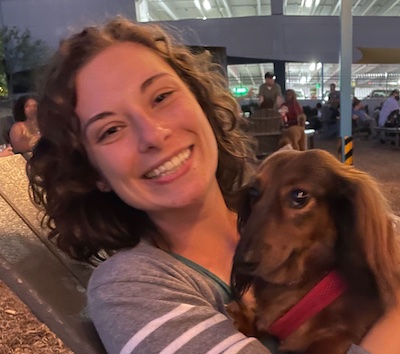Three Ways to Engage Students in Real-Life Science

“Literacy and language are essential components of science. Reading, writing, and talking are paramount to the construction of science knowledge and to learning science” (Patterson Williams, 2020, p. 333).
Learning science and scientific language can be a challenging and painful experience for some students, especially those in already marginalized groups (Patterson Williams, 2020). Minoritized students, students in special education, ESOL students, struggling readers, etc. may approach science education with negative emotions with harmful past experiences shadowing their engagement with learning. A way that educators can help combat this trend is by providing real-life experiences and examples of science through disciplinary and digital literacy practices in science education, namely through science communication.
Science communication shares “scientific ideas, methods, knowledge and research to non-expert audiences in an accessible, understandable or useful way” (Newcastle University, 2022). In other words, it’s a way to engage with science in a nontraditional way that doesn’t focus so much on academic language and practices that don’t really support students from minoritized groups. Science communication comes in many forms, but some of the best, in my opinion, also feature digital literacy. Here are a few of my favorite platforms for science communication that are accessible and interesting for any and all learners:
1. Podcast - Ologies (Smologies)
The free podcast “Ologies” by Alie Ward, or perhaps her classroom-safe, expletive-free version “Smologies,” features interviews by prominent scientists in every field imaginable, from ecology to anthropology to sociology and featuring topics like otters, postcards, pumpkins, trains, and eating plants. Alie Ward’s motto “Ask smart people dumb questions” and humorous interview style is engaging and informative and the podcast format is accessible for many learning styles. (It even has transcripts for every episode!) Ward often selects scientists from minoritized groups to interview in an effort to expand listeners’ perspectives on who can be a scientist. Smologies episodes run about 25 minutes long and are well-suited for a classroom setting, homework assignment, or research source.
2. Social Media - Hank Green on TikTok
Hank Green is a prominent science communicator stationed on social media to answer everyone’s seemingly impossible questions about life and science. Green has been in the content creation biz since 2007 and has started accounts like VlogBrothers, SciShow, and Crash Course that spread information (and combat misinformation) to online audiences. One of his newest ventures is his TikTok account. In short videos (30 seconds to about 3 minutes long), Green does his best to explain baffling phenomena like how infrared photos work, what electrolytes really are, and how popcorn pops in an effort to help listeners “learn more, understand more, and be more curious about their world.” Green’s videos are succinct, feature captions, and address a wide range of topics, making them accessible and engaging to all kinds of learners.
3. Live Interviews - Skype a Scientist
Created by teuthologist (squids!) Sarah MacAnulty, Skype a Scientist is a nonprofit organization connecting real scientists to the public for live interviews with families, schools, libraries, and individuals. With a database of over 1400 scientists, interested parties can fill out a Google Form specifying the age of their group, type of scientist they are interested in, and when they are available and Skype a Scientist will connect them with a working scientist to “get their answers straight from the source.” Skype a Scientist also features scientists from historically marginalized groups; users can request a scientist who is a person of color, LGBTQ, low income, female, 1st generation college student, or disabled. It even offers sessions led in languages other than English. In a live format in which students can ask their own questions to someone who actively works in the field, Skype a Scientist is a great way to combine digital and disciplinary literacy for learners.
This list is by no means comprehensive of all the avenues available for science communication. A quick Google search can reveal countless ways to engage students in digital and disciplinary science learning. But, as education begins (hopefully!) to shift away from traditional science practices, especially in the realm of academic language and accessibility, science communication is the way to go.
More to Explore
- For a list of more science podcasts for students and teachers, see the Connecticut Science Center’s Top 10 Must Listen-To Science Podcasts.
- For more information on social media as an outlet for science communication, see How are Scientists Using Social Media in the Workplace?
- For another look at how science communication creates a more inclusive environment, see Situating the Scientist: Creating Inclusive Science Communication Through Equity Framing and Environmental Justice.
References
Green, H. (2021, December 12). [TikTok] https://www.tiktok.com/@hankgreen1/video/7040943377310960902?
_t=8U1x14cxfVy&_r=1
Patterson Williams, A. D. (2020). Sustaining disciplinary literacy in science: A transformative, just model for teaching the language of science. Journal of adolescent and adult literacy, 64(3), p. 333-336. International Literacy Association. doi: 10.1002/jaal.1100
Skype a Scientist. Skype a Scientist. https://www.skypeascientist.com/
Author Note
Emily Ancona is a kindergarten teacher at Clemens Crossing Elementary in Howard County and is currently working towards a master's degree in Literacy at Loyola University Maryland. Click to find out more information about the Literacy Program at Loyola University Maryland.